Let me share my family's heartwarming twist on the classic sisig.
I had to get creative when Papa was diagnosed with high blood pressure and couldn't enjoy his favorite pork sisig anymore. That's when I discovered this incredible chicken version, all the familiar, crave-worthy flavors of traditional sisig but so much healthier.
The good thing happens when the chopped chicken gets all crispy on the edges, then mingles with the creamy mayo-calamansi sauce and that signature sisig sizzle. It's become our go-to family recipe that Papa can enjoy guilt-free. And honestly? My kids actually prefer it to the pork version!
Whether you're watching your health like my father or just craving that classic sisig experience, this 35-minute chicken sisig recipe recipe brings all the flavors you love about Filipino comfort food, minus the guilt.
Jump to:
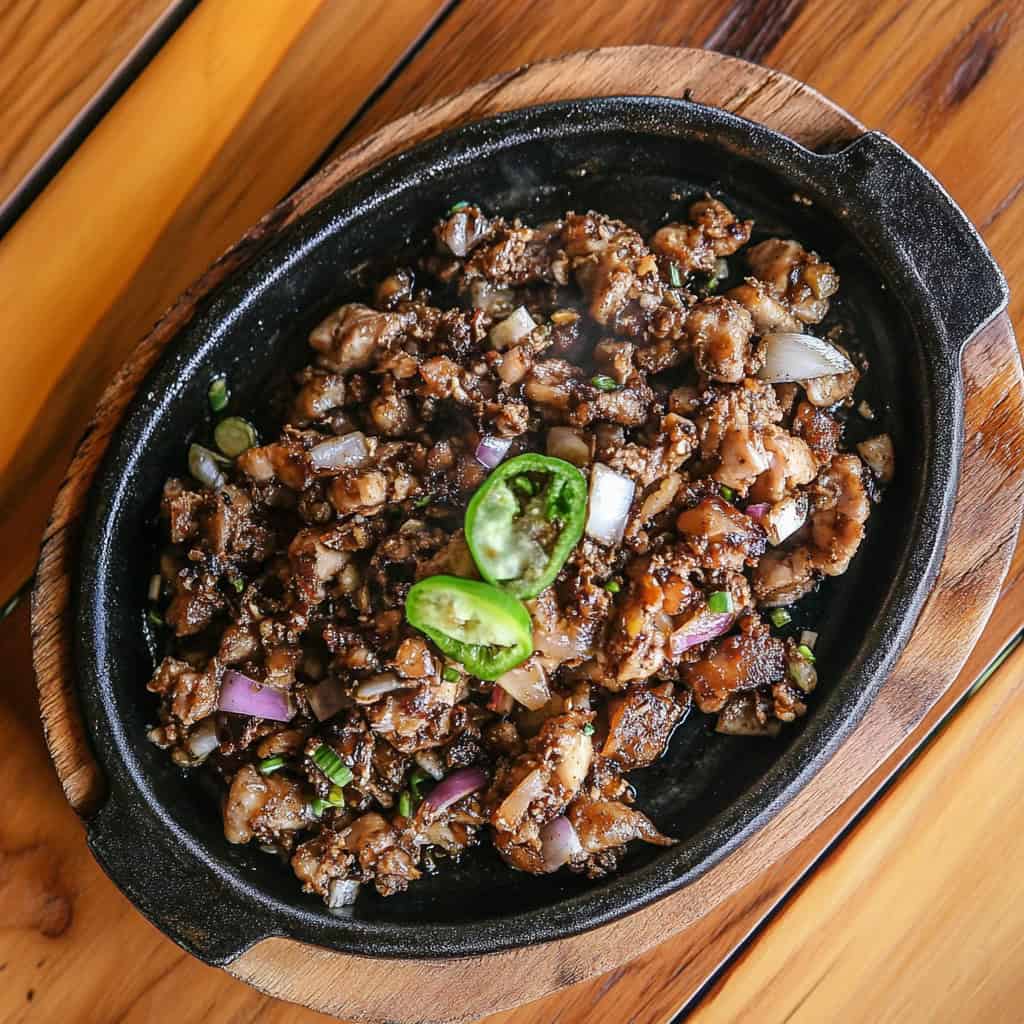
Why You'll Love This Recipe
- Quick & Economical: Transform leftover rotisserie chicken into a gourmet dish
- Perfect Party Food: Serves beautifully on a sizzling plate for that "wow" factor
- Versatile: Works as both pulutan (appetizer) or ulam (main dish)
- Balanced Flavors: Creamy, tangy, spicy, and savory in every bite
- Make-Ahead Friendly: Can be prepared in advance and heated when needed
Ingredients
Each element in this recipe plays a crucial role in creating authentic sisig flavor: chicken provides a lean protein base that crisps beautifully, while chicken liver adds the rich, distinctive depth that defines sisig.
The trinity of garlic, onions, and Thai chilies creates the aromatic foundation, complemented by the creamy-tangy sauce made from mayonnaise and calamansi juice. The soy sauce adds essential umami, and the fresh garnishes add brightness and texture contrast.
Together, these ingredients create the perfect balance of crispy, creamy, tangy, and savory notes that make sisig irresistible while keeping it healthier than traditional versions.
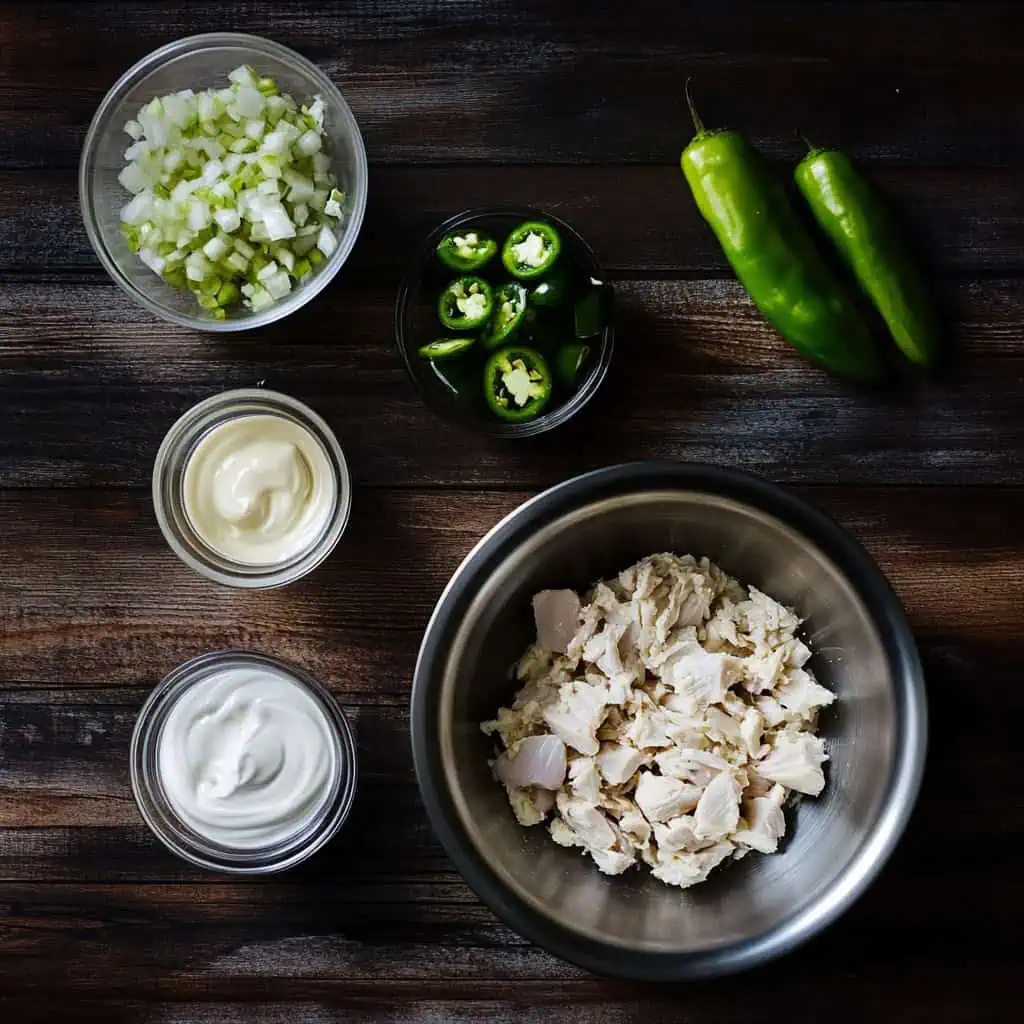
For the Sisig Base:
- 4 cups cooked chicken, finely chopped
- ¼ pound chicken liver
- 1 large white onion, finely diced
- 3 cloves garlic, minced
- 2 Thai chili peppers, chopped
For the Sauce:
- ¼ cup mayonnaise
- ¼ cup calamansi juice or lime juice
- 1 tablespoon soy sauce
- Salt and pepper to taste
For Garnish:
- Extra calamansi
- Sliced green chilies
- Crispy garlic bits
- Chopped green onions
Equipment
- Sizzling Plate: Creates the signature sisig presentation and keeps food hot while eating
- Heavy-Bottom Skillet: Ensures even cooking and proper browning of chicken pieces
- Sharp Knife and Cutting Board: Essential for chopping ingredients into the fine, uniform pieces that define sisig
- Metal Spatula: Used for scraping and turning ingredients to achieve the perfect crisp
- Kitchen Thermometer: Ensures chicken and liver are properly cooked for food safety
- Small Bowls: Helpful for organizing prepped ingredients before cooking begins
- Mixing Bowl: For combining all ingredients with the sauce before transferring to the sizzling plate
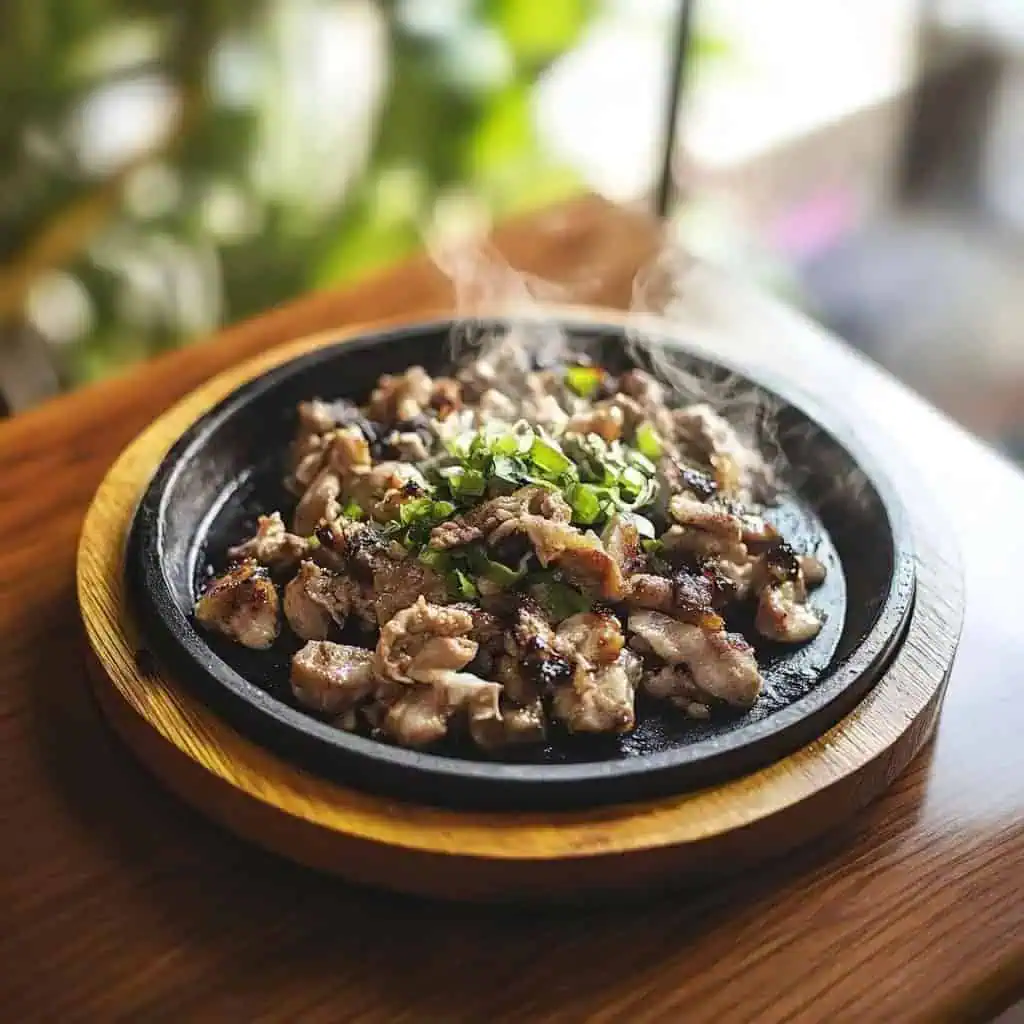
How To Make
- Prep Work: Thirty minutes before cooking, remove your chicken from the refrigerator to reach room temperature. Preheat your oven to 450°F and put your sizzling plate inside to get very hot.
- Prepare Ingredients: Finely chop the cooked chicken into small, uniform pieces. Mince the garlic. Dice the onions into small cubes. If using whole chicken liver, cut it into small pieces.
- Crisp the Chicken: Heat 2 tablespoons oil in a wide pan over medium-high heat. Add minced garlic and cook for 1 minute until fragrant but not browned. Add chopped chicken and spread it evenly in the pan. Let it sit undisturbed for 2-3 minutes to develop a crispy bottom.
- Season Chicken: Pour in the soy sauce and stir well. Cook for another minute until the liquid evaporates and the chicken starts to brown. Transfer to a large mixing bowl and set aside.
- Cook Liver: Using the same pan, add another tablespoon of oil and cook the chicken liver over medium heat for about 5-7 minutes until cooked through and slightly crispy on the edges. Once cool enough to handle, chop into very small pieces.
- Combine Ingredients: In your mixing bowl, combine the crispy chicken, chopped liver, and diced onions. Pour in the calamansi juice and add the mayonnaise. Mix everything thoroughly until all ingredients are evenly coated. Season with salt and pepper to taste.
- Sizzling Presentation: Wearing oven mitts, carefully remove the hot sizzling plate and place it on its wooden base. Quickly transfer your chicken mixture onto the hot plate – it should sizzle immediately. Top with chopped Thai chilies.
- Serve: Present immediately while still sizzling. Encourage diners to mix everything on the hot plate to let the bottom layer get crispy. Serve with extra calamansi on the side and hot rice.
- Enjoy: For the best experience, eat immediately while hot and still sizzling. A fresh squeeze of calamansi juice just before eating enhances all flavors.

Tips from Lola's Kitchen
- For Perfect Seasoning: Season gradually and taste as you go for balanced flavor
- For Even Cooking: Chop chicken pieces to uniform size for consistent cooking and texture
- For Flavor Development: Be patient when crisping the chicken – resist the urge to stir too frequently
- For Maximum Crispiness: Ensure your pan is properly heated before adding ingredients
- For Rich Flavor: Don't skip the liver – it adds the authentic sisig depth that makes this dish special
- For Best Texture: Let the sizzling plate get very hot before adding the mixture for that restaurant-quality sizzle
- For Presentation: Serve straight from kitchen to table while actively sizzling for the full experience
Substitutions
- No Calamansi? Use 3 parts lime juice to 1 part orange juice for a close flavor match
- No Thai Chilies? Substitute with bird's eye chilies, serrano peppers, or red pepper flakes adjusted to your heat preference
- Short on Time? Use 3 tablespoons of prepared liver spread instead of fresh chicken liver
- Creamier Version? Try Japanese Kewpie mayonnaise for extra richness
- Lighter Option? Replace half the mayonnaise with Greek yogurt for a tangier, lighter sauce
- No Chicken? Turkey works beautifully as a substitute with similar cooking times
- No Sizzling Plate? Use a cast iron skillet heated in the oven as an alternative
Troubleshooting
- Too Dry? Add more mayonnaise one tablespoon at a time until desired creaminess is achieved
- Too Wet? Return mixture to pan and cook over medium heat to reduce excess moisture
- Not Crispy Enough? Ensure your pan and oil are properly heated before adding chicken
- Too Salty? Balance with additional calamansi juice or a touch of sugar to counteract
- Not Sizzling Properly? Make sure your plate is heated thoroughly before adding the mixture
- Bland Flavor? Add a dash more soy sauce or a few drops of fish sauce for umami depth
- Too Spicy? Add more mayonnaise and a pinch of sugar to temper the heat
Storage & Reheating
- Refrigeration: Store in an airtight container for up to 3 days. The flavors actually develop nicely overnight!
- Freezing: Not recommended as the texture of the mayonnaise-based sauce will separate upon thawing
- Reheating Methods:
- Stovetop: For best results, reheat in a pan over medium heat until crispy edges return
- Oven: Spread in a thin layer on a baking sheet and heat at 350°F for 10 minutes
- For Serving: Always transfer to a pre-heated sizzling plate for the authentic experience
- Refreshing Leftovers: Add a small squeeze of fresh calamansi juice and a sprinkle of chopped onions when reheating to revive flavors
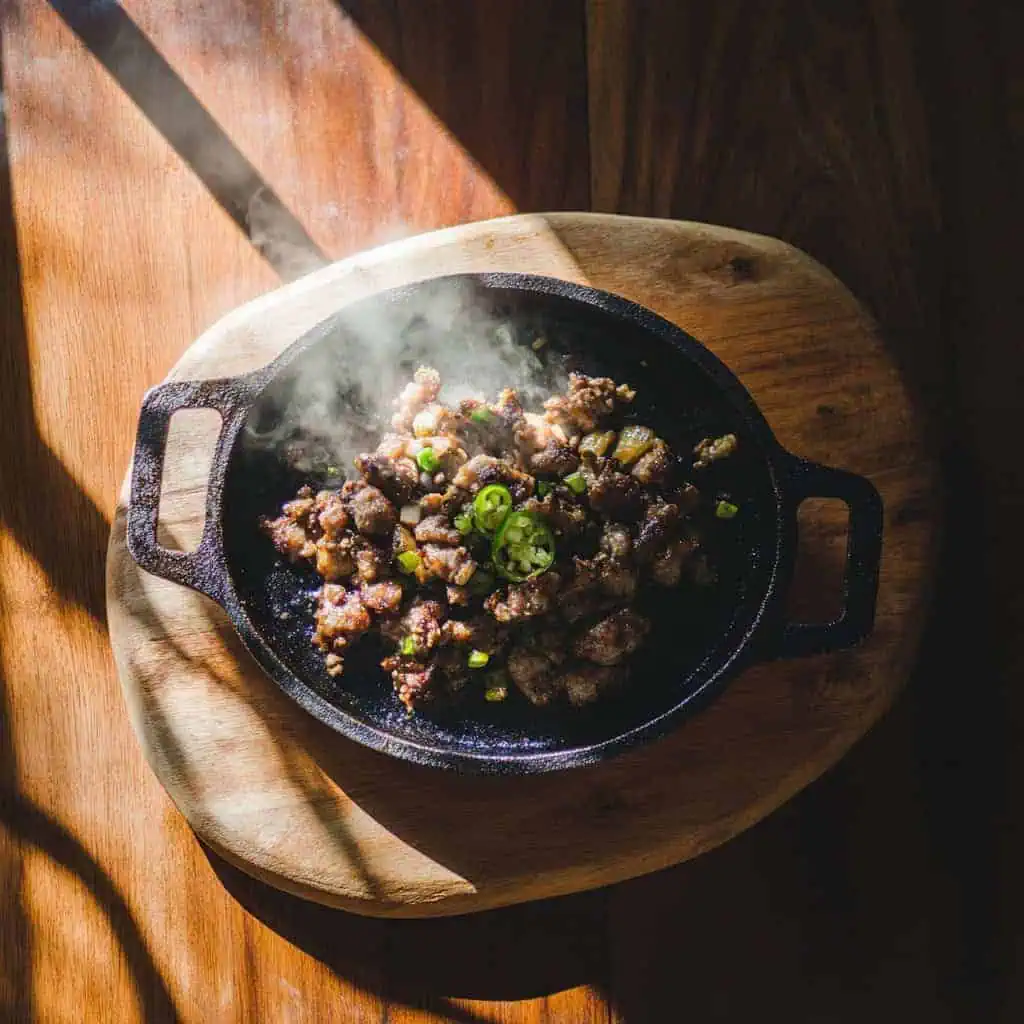
FAQ
Can I use leftover rotisserie chicken for this recipe?
Absolutely! Rotisserie chicken works perfectly and adds extra flavor. Just be sure to finely chop it and remove any skin if you're making a healthier version.
How spicy is this dish normally?
Traditional sisig has a moderate heat level. Our recipe uses two Thai chilies, which provides a pleasant warmth without overwhelming the other flavors. You can easily adjust by increasing or decreasing the amount of chilies.
Can I make this ahead for a party?
Yes! Prepare the mixture up to step 6, refrigerate, then reheat in a pan before transferring to a sizzling plate just before serving. The flavors actually develop nicely with a few hours of resting time.
Is the sizzling plate absolutely necessary?
While not strictly necessary for the flavor, the sizzling plate is essential for the authentic experience. It keeps the dish hot throughout the meal and creates a crispy bottom layer that's part of sisig's signature texture. If you don't have one, a very hot cast iron skillet makes a good substitute.
What sides pair well with Chicken Sisig?
Steamed white rice is the traditional accompaniment. For a complete meal, add a side of ensaladang mangga (green mango salad) or atchara (pickled papaya) to cut through the richness.
Can I use other parts of the chicken besides breast meat?
Yes! Thigh meat actually works wonderfully and stays juicier. A mix of white and dark meat gives the best flavor and texture combination.
How finely should I chop the chicken?
Aim for pieces about ¼-inch in size – small enough to get crispy edges but not so small that they dry out.
What can I do with leftover Chicken Sisig?
Leftover sisig makes excellent filling for omelets, tacos, or stuffed bell peppers. You can also mix it with rice for a flavorful sisig fried rice breakfast!
Related
Looking for other recipes like this? Try these:

Chicken Sisig (Sizzling Filipino Chicken)
Equipment
- Sizzling plate (Sizzling plate na bakal) For that signature sisig presentation
- Heavy-Bottom Skillet (kawali) Ensures even cooking and proper browning
- Sharp knife and cutting board (kutsilyo at sangkalan) For chopping ingredients finely
- Metal spatula (Spatula na bakal) For scraping and turning ingredients
- Kitchen thermometer To ensure proper cooking temperatures
- Small bowls (mangkok) For organizing prepped ingredients
Ingredients
For the Sisig Base:
- 4 cups cooked chicken finely chopped (inihaw na manok)
- ¼ pound chicken liver atay ng manok
- 1 large white onion finely diced (sibuyas)
- 3 cloves garlic minced (bawang)
- 2 Thai chili peppers chopped (siling pangsigang)
For the Sauce:
- ¼ cup mayonnaise
- ¼ cup calamansi juice or lime juice katas ng kalamansi
- 1 tablespoon soy sauce toyo
- Salt and pepper to taste asin at paminta
For Garnish:
- Extra calamansi
- Sliced green chilies
- Crispy garlic bits
- Chopped green onions
Instructions
- Thirty minutes before cooking, remove your chicken from the refrigerator to reach room temperature. Preheat your oven to 450°F and put your sizzling plate inside to get very hot.
- Prepare all your ingredients first: Finely chop the cooked chicken into small, uniform pieces. Mince the garlic. Dice the onions into small cubes. If using whole chicken liver, cut it into small pieces.
- Heat 2 tablespoons oil in a wide pan over medium-high heat. Add minced garlic and cook for 1 minute until it smells good but isn't brown. Add your chopped chicken and spread it out evenly in the pan. Don't stir it for 2-3 minutes – let the bottom get crispy.
- Pour in the soy sauce and stir everything well. Cook for another minute until the liquid is gone and the chicken starts to brown. Put this in a large mixing bowl and set aside.
- Using the same pan, add another tablespoon of oil and cook the chicken liver over medium heat for about 5-7 minutes until it's cooked through and slightly crispy on the edges. Once it's cool enough to touch, chop it into very small pieces.
- Put everything in your mixing bowl – the crispy chicken, chopped liver, and diced onions. Pour in your calamansi juice and add the mayonnaise. Mix everything together until all ingredients are evenly coated. Taste it and add salt and pepper as needed.
- Put on your oven mitts and carefully take out the hot sizzling plate. Place it on its wooden base. Quickly transfer your chicken mixture onto the hot plate – you should hear it sizzle right away. Top with chopped Thai chilies.
- Serve immediately while it's still sizzling. Mix everything on the hot plate to let the bottom layer get crispy. Serve with extra calamansi on the side and hot rice.
- For the best taste, eat it right away while it's hot and still sizzling. Don't forget to squeeze some fresh calamansi juice over your portion right before eating!
Tips from Lola's Kitchen
- "Para lumabas ang tamang alat" - Season gradually and taste as you go
- "Para lumutong" - Ensure chicken pieces are chopped uniformly for even cooking
- "Para hindi masunog" - Watch the garlic carefully as it browns quickly
- "Para mas masarap" - Let the chicken crisp up before adding sauces
Nutrition
The Story Behind Filipino Chicken Sisig
Sisig, a dish that perfectly embodies Filipino culinary ingenuity, has evolved remarkably from its humble beginnings in Pampanga, the culinary capital of the Philippines. While the original sisig was created by the talented Lucia Cunanan (known as "Aling Lucing") in Angeles City during the 1960s using chopped pig face and ears, this chicken version represents the modern Filipino's approach to healthier, more accessible cooking without sacrificing the beloved flavors of our heritage.
This chicken adaptation gained popularity in the early 2000s when health consciousness began reshaping Filipino cuisine. Restaurant chains like Max's and Dencio's introduced their versions, proving that sisig could be reimagined while maintaining its essential characteristics – that perfect blend of tangy, spicy, and creamy flavors served on a sizzling plate. The addition of mayonnaise, a modern twist that's now considered essential, creates the creamy texture that traditional sisig achieved through pig brain.
The beauty of Chicken Sisig lies in its versatility and accessibility. Unlike its pork counterpart, which requires specific cuts and lengthy preparation, this version can be made with readily available ingredients found in any Filipino kitchen. It's become a favorite not just for those avoiding pork for health or religious reasons, but also for busy families looking for a quick yet satisfying meal that brings the restaurant experience home.
Today, Chicken Sisig has earned its place in contemporary Filipino cuisine, appearing on menus from humble carinderias to high-end restaurants. It's a testament to how traditional dishes can be thoughtfully adapted to modern needs while preserving the soul of Filipino cooking – resourceful, flavorful, and always evolving. Whether served as pulutan during gatherings or as a main dish for family dinner, this healthier take on sisig continues to win hearts and palates across the Philippines and beyond.
This recipe honors both tradition and innovation, keeping the essential sisig elements – the sizzle, the textural contrast, and the perfect balance of flavors – while making it more accessible to a wider audience. It's a dish that tells the story of Filipino cuisine's journey into the modern era, where heritage meets health-consciousness without compromising on taste.
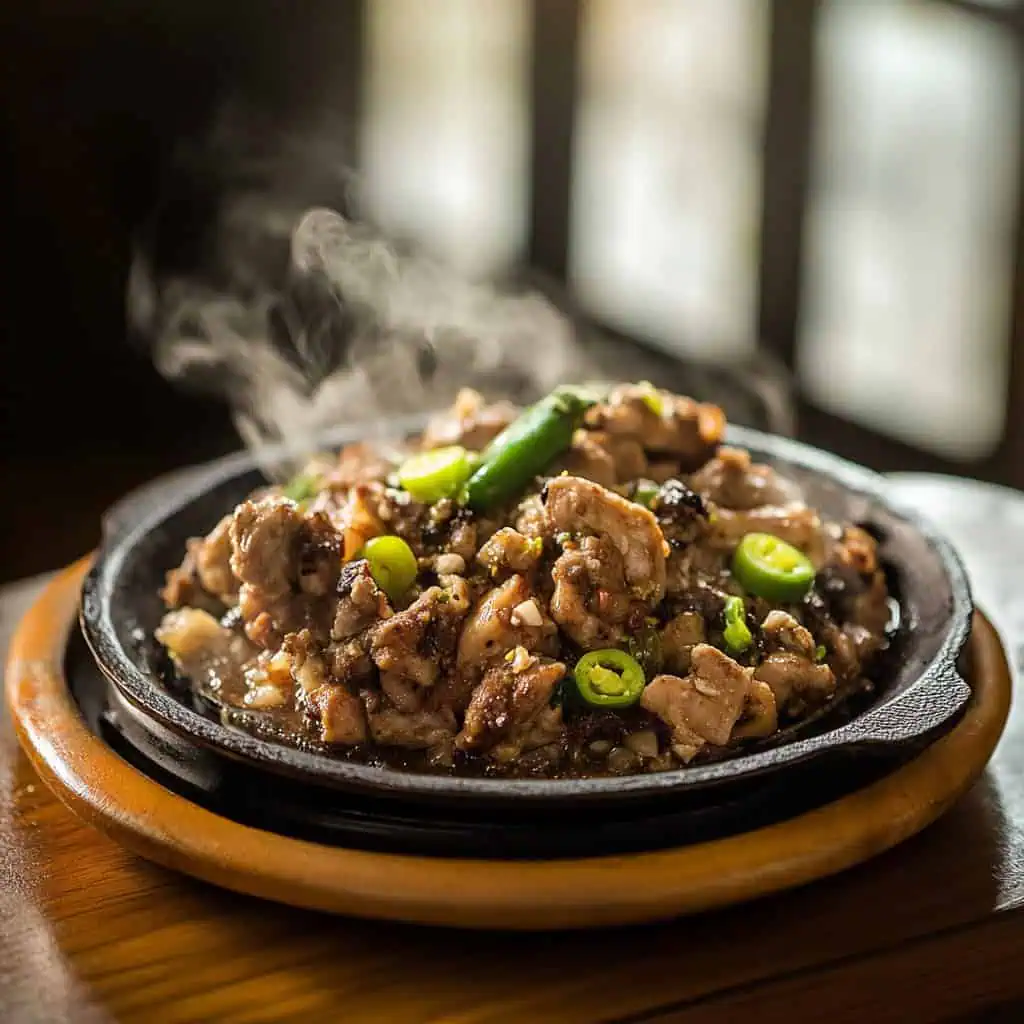





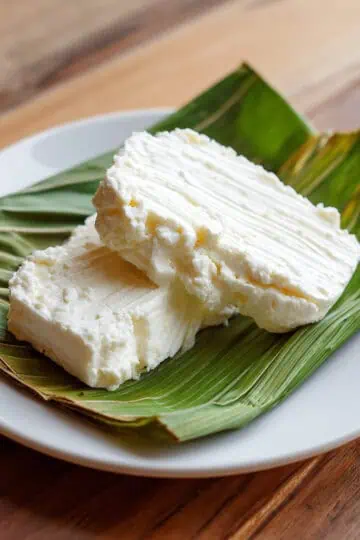
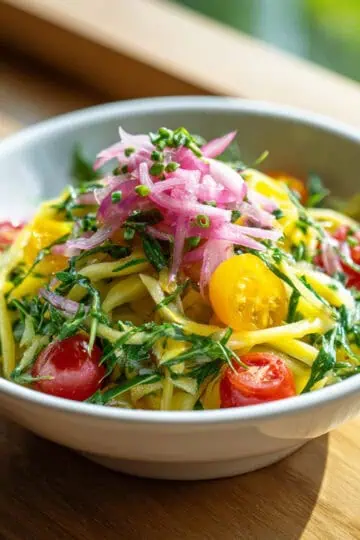
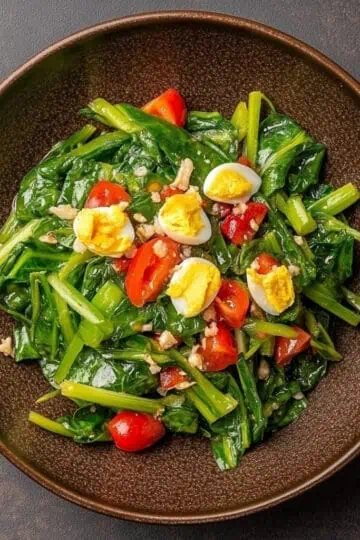
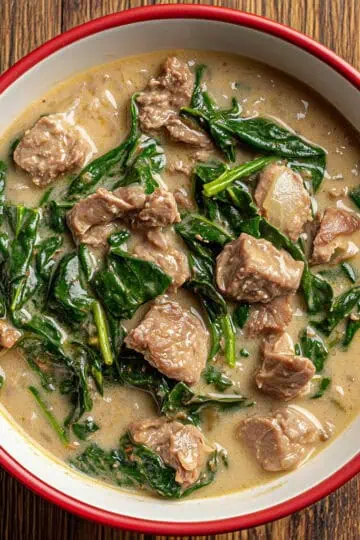
Comments
No Comments